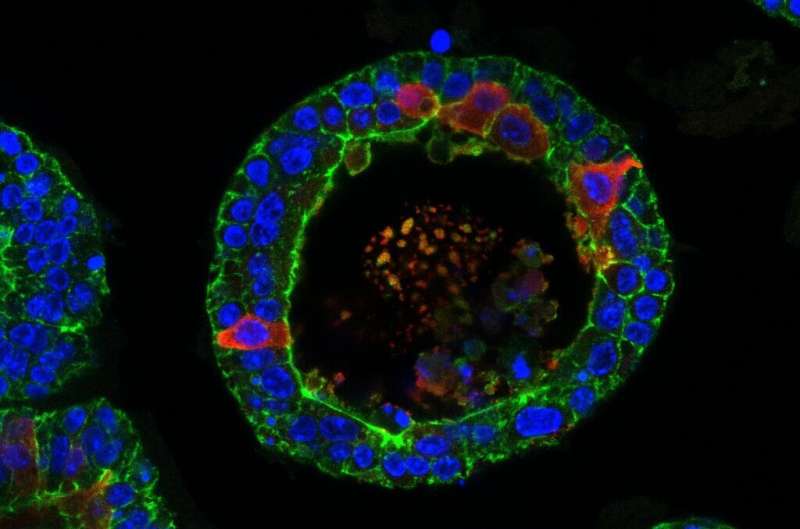
Researchers from the lab of Hans Clevers (Hubrecht Institute) and the UMC Utrecht used organoid technology to grow miniature human tear glands that actually cry. The organoids serve as a model to study how certain cells in the human tear gland produce tears or fail to do so. Scientists everywhere can use the model to identify new treatment options for patients with tear gland disorders, such as dry eye disease. Hopefully in the future, the organoids can even be transplanted into patients with non-functioning tear glands. The results will be published in Cell Stem Cell on the 16th of March.
The tear gland is located in the upper part of the eye socket. It secretes tear fluid, which is essential for lubrication and nutrition of the cornea and has antibacterial components. Rachel Kalmann (UMCU), ophthalmologist and researcher on the project, explains: “Dysfunction of the tear gland, for example in Sjögren’s syndrome, can have serious consequences including dryness of the eye or even ulceration of the cornea. This can, in severe cases, lead to blindness.” However, the exact biology behind the functioning of the tear gland was unknown and a reliable model to study it was lacking. That is, until now: researchers from the group of Hans Clevers (Hubrecht Institute) present the first human model to study how the cells in the tear gland cry and what can go wrong.
Crying organoids
The researchers used organoid technology to grow miniature versions of the mouse and human tear gland in a dish. These so-called organoids are tiny 3D-structures that mimic the function of actual organs. After they cultivated these tear gland organoids, the challenge was to get them to cry. Marie Bannier-Hélaouët, researcher on the project, explains: “Organoids are grown using a cocktail of growth-stimulating factors. We had to modify the usual cocktail to make the organoids capable of crying.” Once the researchers found the right mixture of growth factors, they could induce the organoids to cry. “Our eyes are always wet, as are the tear glands in a dish,” Bannier-Hélaouët says.
Swelling up like a balloon
Similar to the way people cry in response to for example pain, the organoids cry in response to chemical stimuli such as noradrenaline. The cells of the organoids shed their tears on the inside of the organoid, which is called the lumen. As a result, the organoid will swell up like a balloon. The size of the organoids can therefore be used as an indicator of tear production and -secretion. “Further experiments revealed that different cells in the tear gland make different components of tears. And these cells respond differently to tear-inducing stimuli,” says Yorick Post, another researcher on the project.
Atlas of cells
The tear gland is composed of several cell types, but the current model only captures one, the ductal cell. In their paper, the researchers present an atlas of the cells in the tear gland to demonstrate their differences. They generated this atlas using single-cell sequencing; a method with which individual cells can be examined and characterized. Post explains: “In the future, we would like to also grow the other tear gland cell type, so-called acinar cell, in a dish. That way, we can eventually grow a full tear gland in the lab.” With the atlas, the researchers were also able to identify new tear products, which help protect the eye from infections.
Transplanting organoids
Source: Read Full Article
